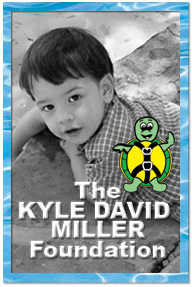This is my nearly 4 year old.
 He sits in a Britax Marathon with a 33lbs rear-facing weight limit (date of manufacture 2005). As you can see, he's pretty happy and comfortable in his seat. I am thrilled we have made it this far rear-facing.
He sits in a Britax Marathon with a 33lbs rear-facing weight limit (date of manufacture 2005). As you can see, he's pretty happy and comfortable in his seat. I am thrilled we have made it this far rear-facing.
 He sits in a Britax Marathon with a 33lbs rear-facing weight limit (date of manufacture 2005). As you can see, he's pretty happy and comfortable in his seat. I am thrilled we have made it this far rear-facing.
He sits in a Britax Marathon with a 33lbs rear-facing weight limit (date of manufacture 2005). As you can see, he's pretty happy and comfortable in his seat. I am thrilled we have made it this far rear-facing.This is his brother
 He is nearly 14 months old, and judging by his love of food, we may be pushing getting to even 3 years old before he hits the 35lbs rear-facing weight limit of his Britax Boulevard. The good news for us though is the recent introduction of seats with a 40lbs rear-facing weight limit. The Sunshine Kids Radian line, the Graco My Ride 65 and the Safety 1st Complete Air are all leading the charge with the higher rear-facing weight limit.
He is nearly 14 months old, and judging by his love of food, we may be pushing getting to even 3 years old before he hits the 35lbs rear-facing weight limit of his Britax Boulevard. The good news for us though is the recent introduction of seats with a 40lbs rear-facing weight limit. The Sunshine Kids Radian line, the Graco My Ride 65 and the Safety 1st Complete Air are all leading the charge with the higher rear-facing weight limit.
But why is rear-facing so important you might ask? Well, it is a combination of physics and how the human body develops. You may have seen crash tests of rear-facing child restraints. If not, please view them now.
Notice how the child is pushed back into the seat and the head, neck and spine stay in alignment? Now view a forward-facing crash test.
Notice how the head and neck are thrown forward in the crash?
Now let's discuss the human body. A child's head accounts for approximately 25% of their total weight. As you age, this percentage decreases. However, that initial high percentage makes the rear-facing of a child so important. Weight combined with speed equals force. The greater the weight, the greater the force. Internally also, the spine of a young child is made up of cartilage. Not until between the ages of 3 and 6 years old do these bones fuse together, a process known as ossification. When that happens, the spine is able to protect the spinal chord better. Until then, the spinal chord can stretch in a forward-facing crash - up to 2 inches! Only 1/4 inch of stretch is necessary to render a child either paralyzed or dead. The disconnecting of the spinal chord from the brain stem is known as internal decapitation. This, sadly, is not uncommon in forward-facing crashes.
You may be worried about your child's legs when they are rear-facing. I refer you again to this picture:

I assure you my son is very comfortable rear-facing. There have been no documented cases of a child's leg breaking in a rear-facing crash, but sadly many documented cases of broken necks and worse of forward-facing children. Here is Joel's story:
So, if your Pediatrician, or your friend, or your relative tells you it's time to forward-face your child in their child restraint when they have reached 1 year old and 20lbs, you can take that opportunity to educate them that it is 5 times safer to keep your child rear-facing and that's what you will be choosing to do instead.
You can read more information about why rear-facing is the safer choice here on our website.
 He is nearly 14 months old, and judging by his love of food, we may be pushing getting to even 3 years old before he hits the 35lbs rear-facing weight limit of his Britax Boulevard. The good news for us though is the recent introduction of seats with a 40lbs rear-facing weight limit. The Sunshine Kids Radian line, the Graco My Ride 65 and the Safety 1st Complete Air are all leading the charge with the higher rear-facing weight limit.
He is nearly 14 months old, and judging by his love of food, we may be pushing getting to even 3 years old before he hits the 35lbs rear-facing weight limit of his Britax Boulevard. The good news for us though is the recent introduction of seats with a 40lbs rear-facing weight limit. The Sunshine Kids Radian line, the Graco My Ride 65 and the Safety 1st Complete Air are all leading the charge with the higher rear-facing weight limit.But why is rear-facing so important you might ask? Well, it is a combination of physics and how the human body develops. You may have seen crash tests of rear-facing child restraints. If not, please view them now.
Notice how the child is pushed back into the seat and the head, neck and spine stay in alignment? Now view a forward-facing crash test.
Notice how the head and neck are thrown forward in the crash?
Now let's discuss the human body. A child's head accounts for approximately 25% of their total weight. As you age, this percentage decreases. However, that initial high percentage makes the rear-facing of a child so important. Weight combined with speed equals force. The greater the weight, the greater the force. Internally also, the spine of a young child is made up of cartilage. Not until between the ages of 3 and 6 years old do these bones fuse together, a process known as ossification. When that happens, the spine is able to protect the spinal chord better. Until then, the spinal chord can stretch in a forward-facing crash - up to 2 inches! Only 1/4 inch of stretch is necessary to render a child either paralyzed or dead. The disconnecting of the spinal chord from the brain stem is known as internal decapitation. This, sadly, is not uncommon in forward-facing crashes.
You may be worried about your child's legs when they are rear-facing. I refer you again to this picture:

I assure you my son is very comfortable rear-facing. There have been no documented cases of a child's leg breaking in a rear-facing crash, but sadly many documented cases of broken necks and worse of forward-facing children. Here is Joel's story:
So, if your Pediatrician, or your friend, or your relative tells you it's time to forward-face your child in their child restraint when they have reached 1 year old and 20lbs, you can take that opportunity to educate them that it is 5 times safer to keep your child rear-facing and that's what you will be choosing to do instead.
You can read more information about why rear-facing is the safer choice here on our website.










